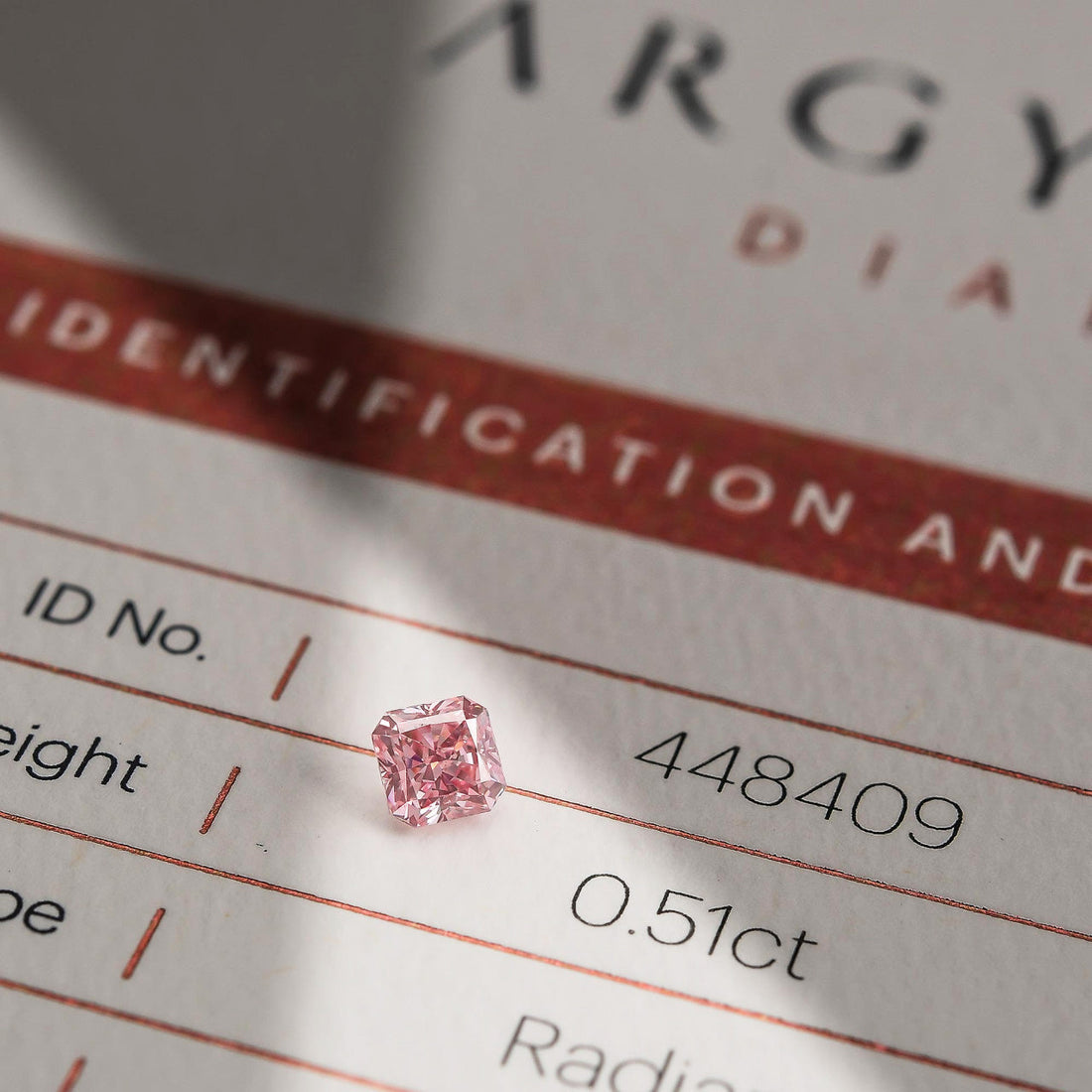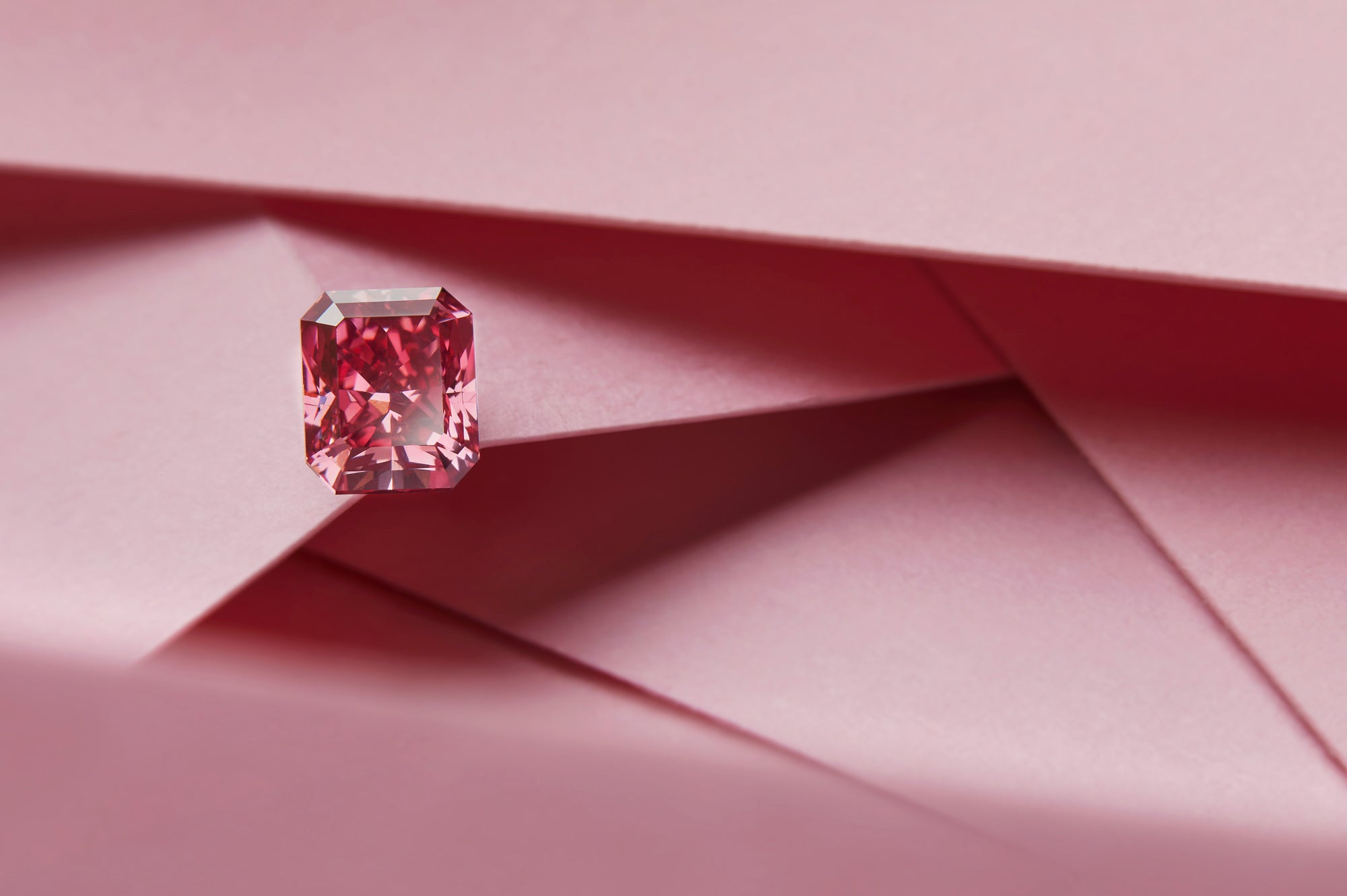
Decoding Colour: Argyle & GIA Grading Explained
Share
Why Colour Matters Most
In the diamond world, collectors often reference the “4Cs”: cut, colour, clarity, and carat. But when it comes to pink diamonds from the Argyle mine, colour stands above all else.
Unlike white diamonds, where clarity and size can dominate, pink diamonds are valued primarily for the intensity and quality of their colour. The two grading systems most relevant to collectors — Argyle’s proprietary scale and the GIA’s global framework — provide the language to describe and compare these extraordinary gems.
The Argyle Grading System
During its operation, the Argyle mine developed its own proprietary colour grading system. This scale became a hallmark of provenance and is still referenced today.
- Hue: Argyle used abbreviations like “PP” (Purplish Pink), “P” (Pink), “PR” (Pink Rose), and “R” (Red).
- Intensity: Numbers from 1 to 9 indicated strength of colour, with “1” being the most saturated and “9” the lightest.
- Example: A “1PP” was an exceptionally vivid purplish-pink, while a “6P” was a lighter pink.
This system was unique to Argyle and remains deeply tied to its legacy.
The GIA Colour Scale
The Gemological Institute of America (GIA), the global authority in diamond grading, uses descriptive categories:
- Faint, Very Light, Light
- Fancy Light
- Fancy
- Fancy Intense
- Fancy Vivid, Fancy Deep, Fancy Dark
For pink diamonds, Fancy Intense and Fancy Vivid are especially prized, representing the most vibrant colours.
Two Systems, Different Perspectives
Although both systems aim to describe colour, they do not map neatly onto each other.
- Argyle’s system was designed for internal use at the mine and developed over decades of classifying its unique production.
- GIA’s framework was created for coloured diamonds globally, not just Argyle stones.
- A diamond might carry both an Argyle report and a GIA certificate, but there is no direct formula that converts one grade to the other.
Instead, collectors see the two systems as complementary:
- Argyle’s scale ties the diamond to the mine’s history and provides fine distinctions within its production.
- GIA’s grading offers global recognition and consistency across the wider coloured diamond market.
Together, they add depth, reassurance, and context for collectors.
Why Colour Drives Value
For collectors, grading is not just technical language — it has real-world impact on desirability and price.
- Colour Intensity: A difference in grading, such as Fancy Light vs. Fancy Intense, can change a diamond’s value dramatically.
- Hue Modifiers: Purplish or rose tones tend to be more sought after than browner undertones.
- Provenance: When a diamond carries both Argyle and GIA documentation, it often commands additional confidence and prestige.
Still, no grading system can substitute the personal impact of seeing a pink diamond in person — where the emotional response often outweighs the paperwork.
The Challenges of Colour Perception
Grading is never purely objective. Lighting, background, and even an observer’s eye sensitivity all influence how colour is perceived.
This subjectivity is part of the magic. Certificates provide structure, but the final impression — the emotional reaction to a diamond’s hue — is what truly matters to collectors.
Beyond Colour: The Role of the Other “Cs”
Although colour is the leading factor, collectors don’t ignore cut, clarity, and carat:
- Cut: A masterful cut enhances brilliance and can intensify the appearance of colour.
- Carat: Larger stones with strong colour are exponentially rarer.
- Clarity: Less critical than colour, but still relevant for overall appeal.
In the end, however, it is colour that defines a pink diamond from Argyle and sets it apart from all other gems.
Argyle’s Enduring Legacy
Though the mine closed in 2020, Argyle’s grading system lives on in Tender catalogues, certificates, and collectors’ conversations. It remains part of the cultural and historical record of one of the world’s rarest diamond sources.
For today’s collectors, understanding both Argyle’s system and GIA’s framework offers the best of both worlds: provenance anchored in history, and global recognition through modern certification.
Conclusion
Grading colour in pink diamonds is both a science and an art. Argyle’s proprietary codes and GIA’s descriptive categories do not align perfectly, but together they provide collectors with the tools to appreciate, compare, and value these rare stones.
Ultimately, though, grading is only part of the story. Every pink diamond is unique, and its true beauty lies in the experience of seeing it — the moment when colour, provenance, and rarity combine to create something unforgettable.
At Collective Insights, we celebrate these stories, helping collectors understand not just the reports, but the enduring treasures themselves.

